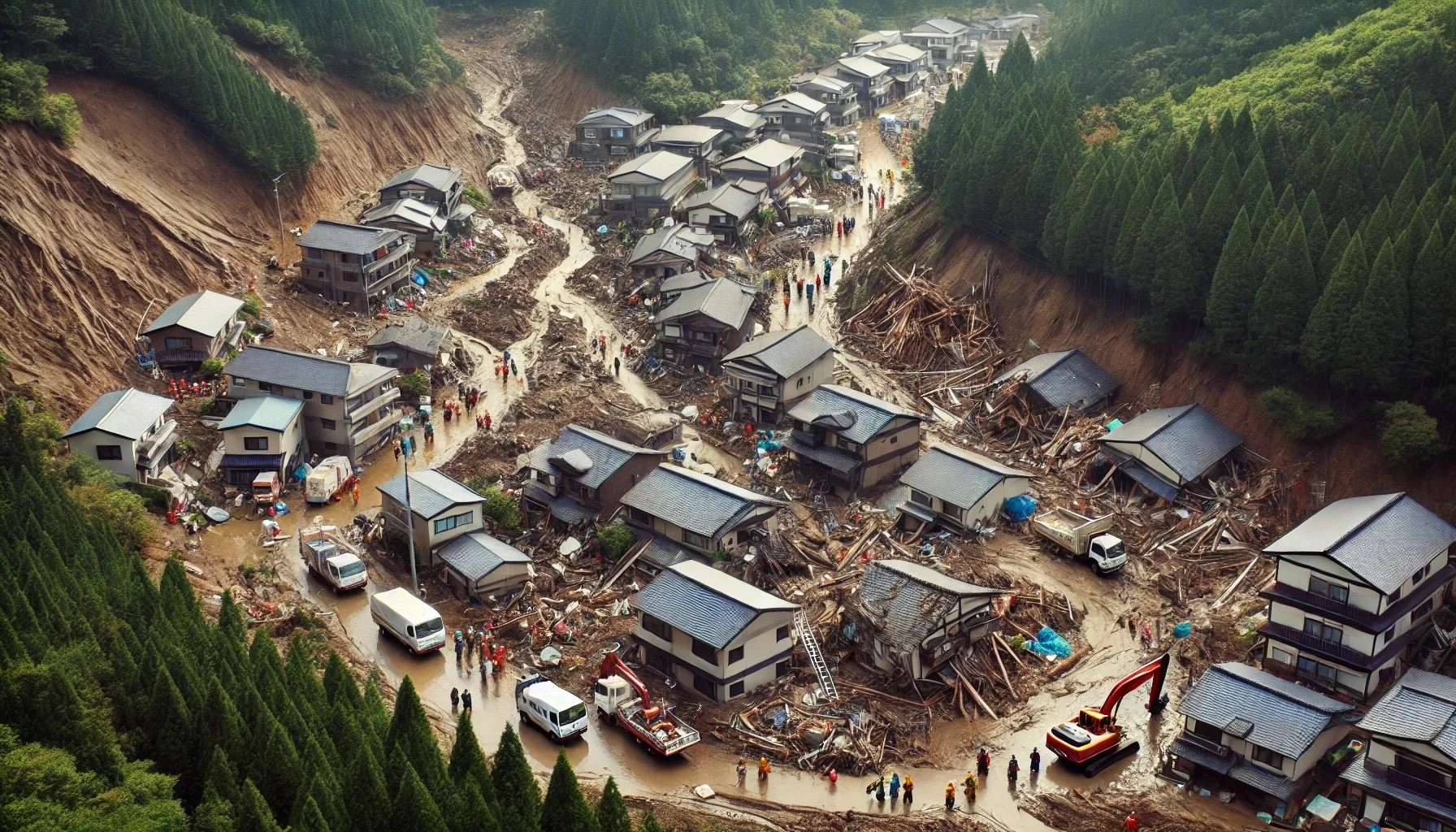
The 2014 Hiroshima Landslides
by: The Calamity Calendar Team
August 20, 2014
The Calm Before the Storm
In the serene city of Hiroshima, August 19, 2014, seemed like any other summer day. Residents went about their routines, unaware of the looming catastrophe. The weather forecast predicted heavy rain, but no one could have anticipated the deluge that was about to hit.
A Night of Torrential Rain
As night fell, the skies opened up. By midnight, the rain had intensified, pounding the city relentlessly. Hiroshima recorded a month's worth of rainfall in just a few hours. The ground, already saturated from weeks of persistent rain, reached its breaking point.
Around 3:20 AM on August 20, 2014, disaster struck. The first landslides roared down the hillsides of the Asaminami and Asakita wards. Entire slopes gave way, sending torrents of mud, rocks, and debris crashing into residential areas. Houses were buried, roads were blocked, and lives were suddenly at risk.
Desperation in the Dark
In the early hours of the morning, chaos reigned. Residents awoke to the sound of rumbling earth and rushing water. Many barely had time to react as their homes were engulfed. Panic spread as people scrambled to escape, but in the darkness, it was hard to know where safety lay.
Emergency services were quickly overwhelmed by the scale of the disaster. Calls for help flooded in as first responders struggled to reach the worst-hit areas. By dawn, the full extent of the devastation became clear.
The Grim Reality
Morning light revealed a landscape transformed by destruction. Entire neighborhoods were buried under thick layers of mud and debris. Rescue workers, including firefighters, police, and the Self-Defense Forces, launched a massive operation to search for survivors.
Thanks for subscribing!
Among the wreckage, stories of heroism and tragedy emerged. Families were torn apart, with loved ones missing or confirmed dead. One particularly heartbreaking story was that of a young boy who had been sleeping in his bed when his house was swept away. Despite the best efforts of rescue teams, he was never found.
The Aftermath
The landslides claimed 74 lives and left many others injured or missing. Hundreds of homes were destroyed or severely damaged, displacing countless residents. The economic toll was staggering, with estimates of over $100 million in damages.
In the weeks and months that followed, Hiroshima began the arduous process of recovery. Temporary shelters were set up for those who had lost their homes. Reconstruction efforts focused on rebuilding infrastructure and providing support to affected families.
Lessons Learned
The Hiroshima landslides served as a wake-up call for Japan. The disaster prompted a thorough review of the country's disaster preparedness and response systems. Authorities implemented stricter building regulations in landslide-prone areas and enhanced early warning systems to better predict and respond to future threats.
Advances in technology have since improved real-time monitoring of weather patterns and soil moisture levels. These efforts aim to prevent a repeat of the 2014 tragedy and to ensure that communities are better equipped to handle natural disasters.
Moving Forward
Today, Hiroshima stands as a testament to resilience and recovery. The city has rebuilt, and its residents have worked tirelessly to move forward. Yet, the memory of that fateful night remains a powerful reminder of nature's unpredictability and the importance of preparedness.
The Hiroshima landslides of August 20, 2014, were a tragedy that shook a nation. But they also sparked crucial changes that continue to save lives and mitigate risks. As Hiroshima remembers the past, it also looks to a future where such devastation might be prevented.
Stay in the Loop!
Become a Calamity Insider and get exclusive Calamity Calendar updates delivered straight to your inbox.
Thanks! You're now subscribed.